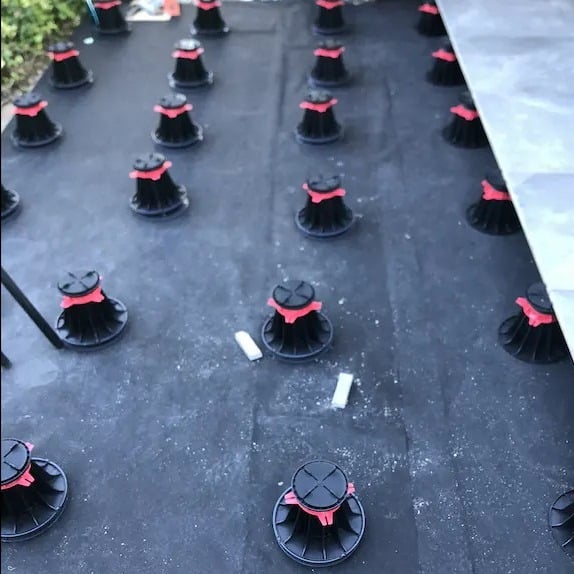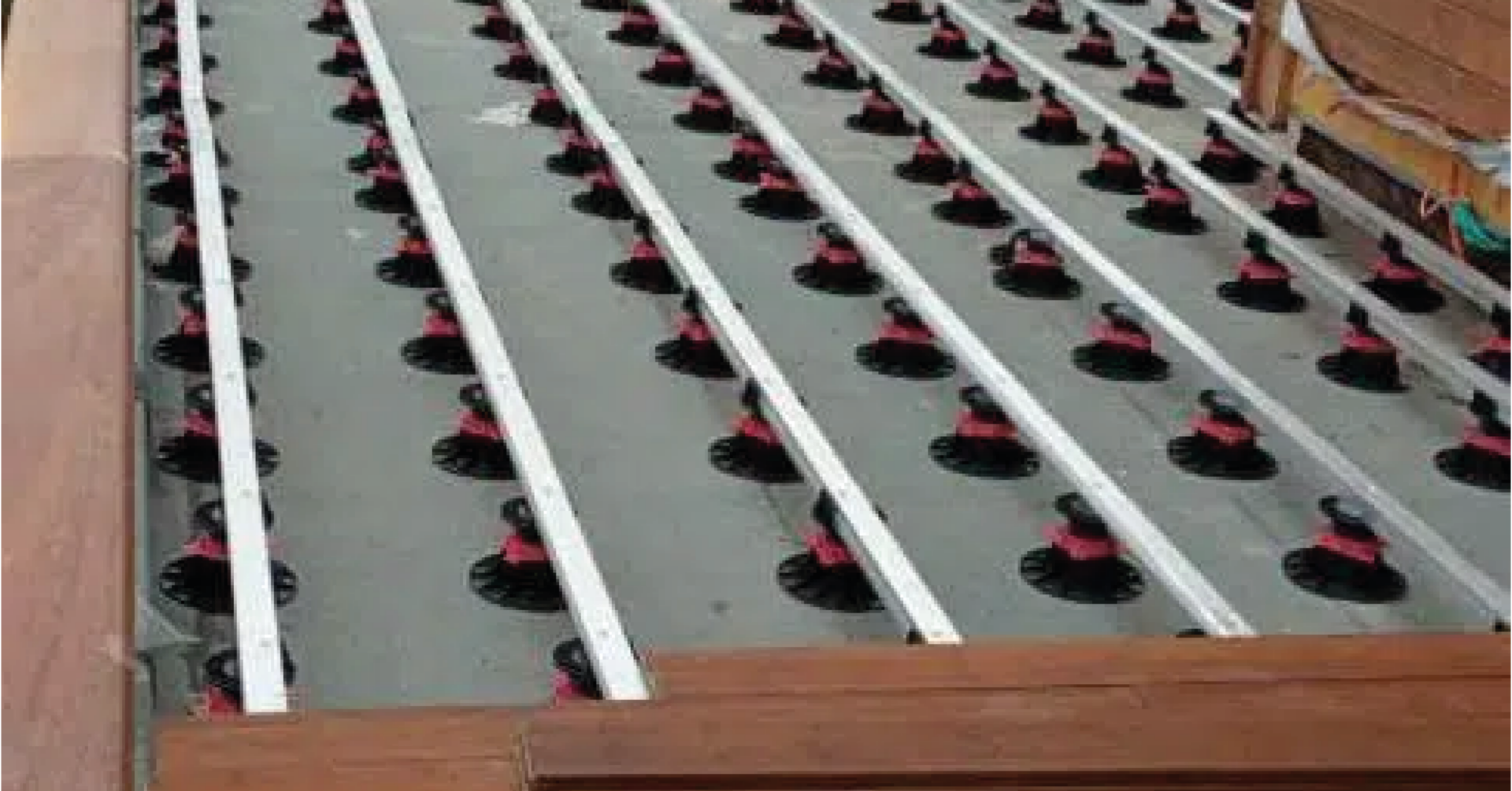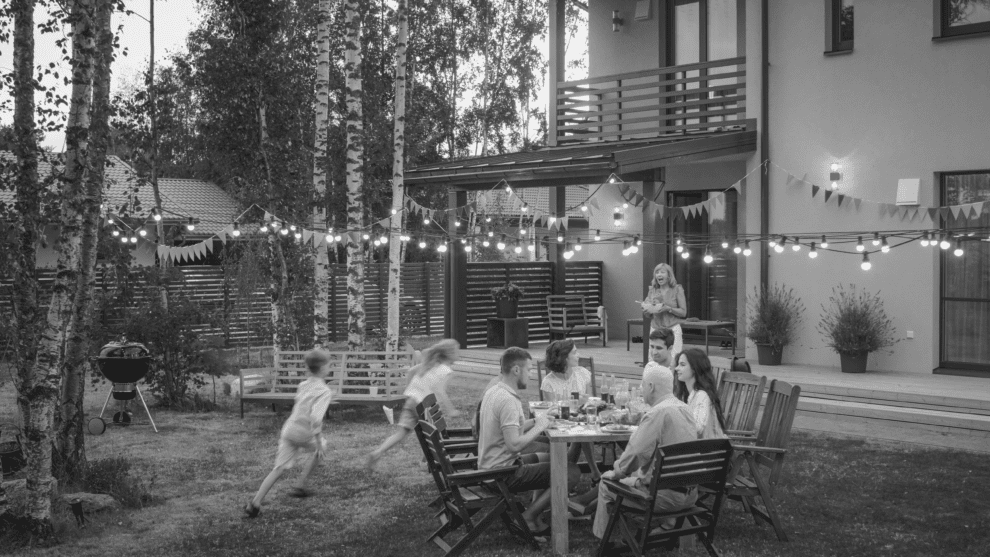Do I need a slope for a terrace on pedestals?
Introduction
When you’re planning a terrace on a slab, a crucial question often arises: should the terrace be sloped? The short answer is yes, a slope is generally necessary to ensure proper drainage of your terrace and guarantee its long-term durability. The latter is governed by DTU 52.1 and DTU 51.4. In this article, we’ll explore the reasons why a slope is recommended, as well as the benefits and tips for creating a sloped terrace.

Efficient draining
One of the main reasons why a slope is essential for a slab terrace is to ensure effective drainage of rainwater. Without a proper slope, water can collect on the terrace, leading to problems of infiltration, stagnation and even deterioration of the materials. By slightly sloping the terrace surface, you allow water to drain off naturally, thus avoiding problems associated with excessive humidity.
Preventing infiltration
A terrace without a slope can cause water to seep into underlying spaces, such as basements, foundations or cellars. Stagnant water can seep into cracks and joints, causing long-term structural damage. A well-designed slope ensures rapid water drainage, minimizing the risk of infiltration and potential damage.
Avoid frost problems
In regions with cold winter temperatures, a deck without a slope can be prone to frost problems. Water stagnating on the deck surface can freeze, causing cracks, deformation and safety problems. A proper slope allows water to drain away and reduces the risk of frost, preserving the integrity of your deck.
Tips for creating the right slope for your slab terrace on pedestals
Determine the direction of the slope: Ideally, the slope should be directed away from your home or any other structure to prevent water infiltration. Be sure to comply with local drainage standards and regulations.
Slope calculation : A slope of 1 to 2% is generally recommended for terraces on pedestals. This means that there should be a difference in height of around 1 to 2 centimeters per meter of terrace. A slight difference in level is sufficient to allow water to run off properly. If you use a self-levelling pedestal, it is possible to create a slope of up to 5%.
Use adjustable shims: To create the desired slope, you can use adjustable shims under the terrace on pedestals. This allows you to compensate for differences in ground level and create a uniform deck surface with a slight slope.
Hire a professional: If you’re not sure how to create the right slope for your adjustable pedestal terrace, it’s advisable to call in a qualified professional. An expert will be able to assess your specific situation, take drainage factors into account and provide you with precise advice on how to create a safe, long-lasting terrace.
Installing a sloping deck on wooden or aluminum joists
When you create a wood or composite sloping terrace, wood, composite or aluminum joists play a crucial role in the structure and stability of your outdoor layout. They come in varying thicknesses: 28, 45 and 60 mm. Their width, however, must always be greater than 50 mm, in accordance with DTU 51-4.
Wooden joists provide solid support for your deck boards, while allowing you to compensate for the difference in height due to slopes with the help of adjustable pedestals ranging from 8 to 700 mm, to which you can add accessories for extra height.
Wooden joists offer several advantages:
> They ensure even weight distribution on the pedestals
> They reinforce the solidity and durability of your deck.
> What’s more, wood offers a warm, natural look that blends harmoniously with your outdoor environment!
Select quality, moisture- and weather-resistant wood joists to guarantee the longevity of your sloped deck.
Conclusion
In conclusion, a slope is essential for a slab terrace. It ensures effective drainage, prevents seepage and avoids frost-related problems. By taking the above tips into account, you can create a terrace on adjustable pedestals that offers both aesthetics and functionality, while ensuring its longevity.
Remember, a well-designed, correctly sloped terrace is the key to making the most of your outdoor space, whatever the weather.
For more technical information, see our article “How to prepare the ground to create a sloped terrace on pedestals”.

